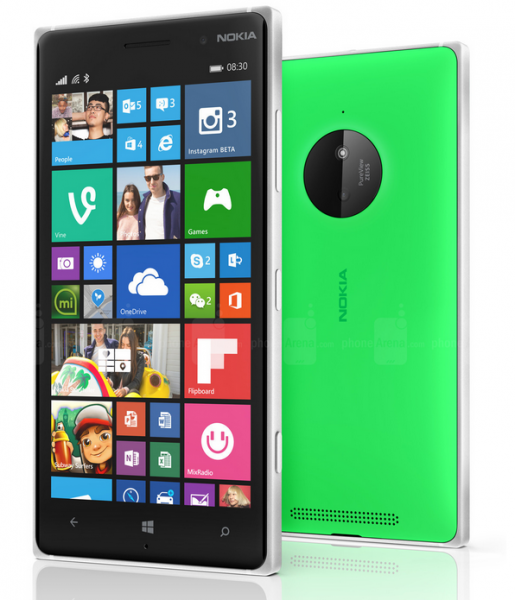
One of the first things you’ll notice about Nokia’s Lumia 830 is its well-crafted body that belies its price tag.
For S$529, you get a metal-rim shell that adds to the premium feel of the phone, along with Carl Zeiss optics of the PureView variety. That’s on top of its wireless charging prowess and a five-inch Gorilla Glass 3 display.
Its removable back cover is a big plus too, letting you swap in a spare battery without the need to bring along a portable charger to juice up when the power runs low. Need more storage? Simply slot in an SD card to make space for more photos and videos.
With respectable hardware and Nokia’s legendary design at a decent price, it’s hard to fault the Lumia 830 – at least on paper.
But once you delve deeper into the capabilities of the phone, you’ll begin to see why the Lumia 830 is a midrange device.
For a start, its 720p IPS LCD display looks less luscious compared with the Lumia 930’s full HD Amoled display.
That’s not to say the Lumia 830’s screen is any less usable – colours are still rendered accurately, along with deep blacks. Just don’t expect photos and videos to pop out like on a higher-end device.
Then comes the performance of the phone. With a low-end Snapdragon 400 processor, the Lumia 830 does feel a tad sluggish when browsing web pages in Internet Explorer.
Various benchmarks have attested to this, with the Lumia 830’s SunSpider Javascript performance falling behind that of the Lumia 930 and even the Xiaomi Redmi Note.
The Lumia 830, however, redeems itself by managing transitions in Windows Phone 8.1 with ease despite sporting a modest processor. It also did not stutter when switching between apps.
As you would expect from a Lumia device, the Lumia 830’s 10-megapixel camera takes good-looking snapshots even for those with no photography skills.
A dedicated camera button on the metal frame lets you fire up the default Windows Phone camera app. From there, you can choose to use various ‘lenses’ from other apps such as the Nokia Camera and Lumia Selfie apps.
With sufficient lighting, the Lumia 830 delivers vibrant photos and excellent macro shots, though things may look at little muted and under exposed for indoor shots.
As a phone – yes, we still make calls on smartphones – the Lumia 830 offers good sound quality and call reception. Skype calls made over a home Wi-Fi network sounded loud and clear too.
Even with good hardware and design, Windows Phone devices are often shunned for their apps that are perceived to be inferior to that of iOS and Android devices.
To be fair, the quality of Windows Phone apps has been improving. The Facebook app is virtually indistinguishable from its iOS and Android counterparts. Ditto for the Instagram Beta app.
Of course, there’s still a good number of apps that seem to be treated like second-class citizens by developers and haven’t been updated for quite a while.
Hopefully, this will change as Microsoft continues to enhance the value of the Windows Phone platform, which has improved by leaps and bounds in the last few years.
Its capable Cortana personal assistant seems smarter than Siri and Google’s voice search, while the new Action Center now puts notifications and other phone controls within reach.
All in, if you’re looking for your first Windows Phone, the Lumia 830 is worth a shot. It may well be a refreshing change from the usual iPhone and bevy of Android devices.






